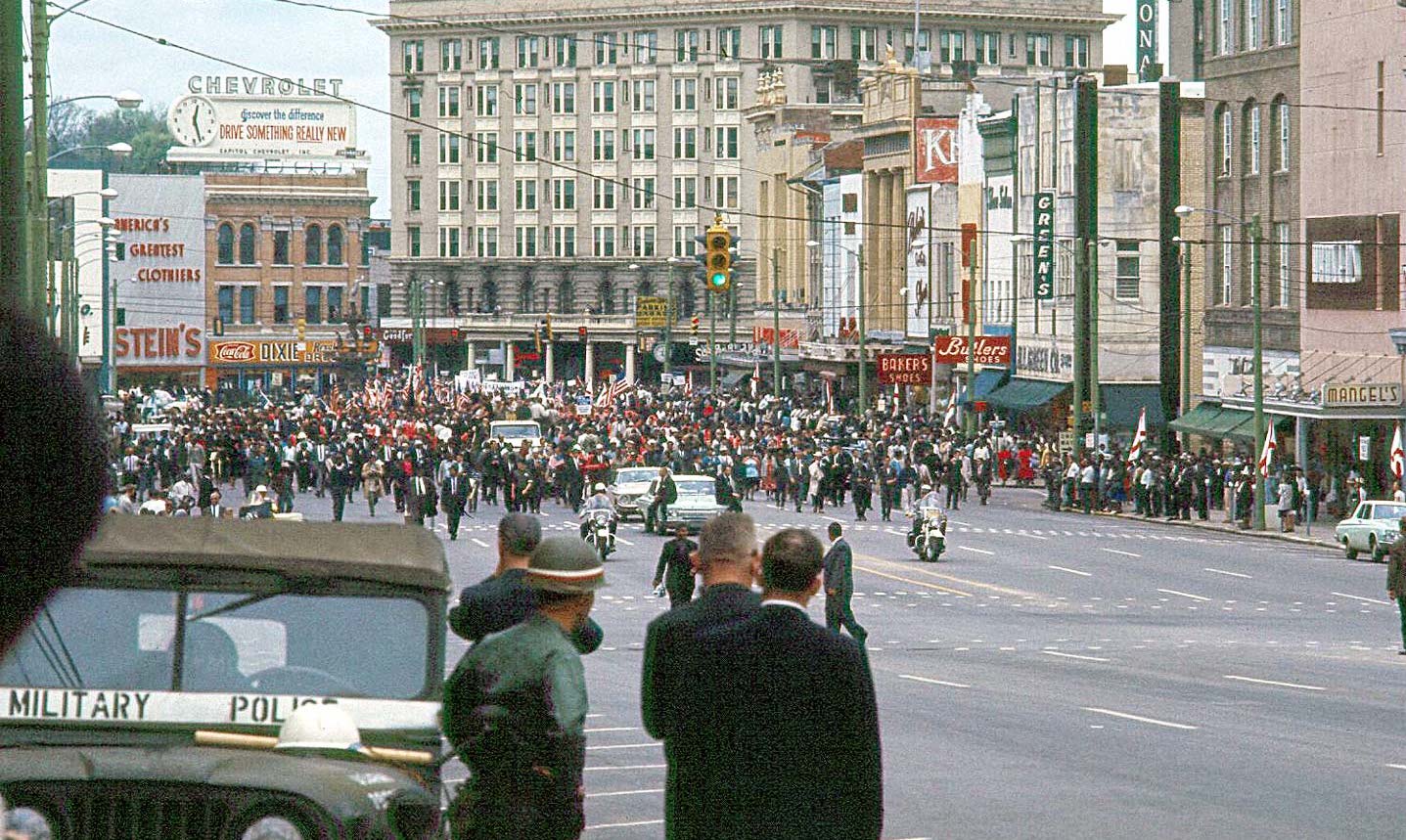Witnessing History
Continuing the Fight for Civil Rights and Justice
Fred Stone was in college when he photographed the historic arrival of civil rights marchers in Montgomery, Alabama, in the spring of 1965. Now retired, he shared his photos with the California History Center at De Anza College. Historian David Howard-Pitney, a retired De Anza instructor, wrote the accompanying essay.
 Marchers carry flags in Montgomery on March 25, 1965. (Fred Stone)
Marchers carry flags in Montgomery on March 25, 1965. (Fred Stone)
 Marchers gather outside the Alabama state Capitol. (Fred Stone)
Marchers gather outside the Alabama state Capitol. (Fred Stone)
Following passage of the Voting Rights Act – and its vigorous enforcement for over 50 years by the federal government – the numbers of Black voters rose dramatically. This may seem to offer another feel-good conclusion to an essay on civil rights history. But ...
In 2013, the U.S. Supreme Court’s ruling in Shelby County v. Holder weakened key provisions of the 1965 Voting Rights Act.
One of the most important was the law's Section 5, which required states with a history of voter discrimination to obtain federal review and “preclearance” of any new voting rules before they could be implemented.
Following Shelby, there has been a proliferation of new state laws passed by Republican-controlled governments – particularly, but not only, in Southern states – that have tightened voter eligibility and reduced voting opportunities. Many of these have been Voter ID laws and reductions in early voting. Supporters argue they are needed to prevent voter fraud and ensure election integrity. But while the exact means vary enormously, they have the unmistakable effect of suppressing the number of voters in elections. And while all these recent voter restriction measures are worded in a colorblind, nondiscriminatory manner, they reduce, by making more difficult, voting by people of color, the young and the poor who tend to vote Democratic.
Some of the post-Shelby voter restriction measures, such as reducing the places and times for registration and voting – particularly in times, places and ways favored by Blacks – resemble some of the voting prevention techniques that the Selma voting rights activists had fought.
Despite – or because of – these efforts to restrict voting, there was another national surge of African Americans voting in the 2020 election that proved instrumental in electing Democrats Joe Biden as president and Kamala Harris as vice-president.
A multiracial Democratic voting coalition in Georgia helped elect Harris as the first ever Black, female and South Asian American vice-president.
Just a few weeks later, many of the same voters in Georgia helped elect two new Democratic U.S. senators: African American Raphael Warnock and Jewish American Jon Ossoff.
As a warning against complacency, though, a typical postelection headline read: “GOP state lawmakers seek tougher voting rules after record turnout.” In the months following the 2020 elections, Republican state legislators introduced a flood of bills proposing the largest wave of voting suppression measures since the South’s black disenfranchisement conventions of the 1890s.
Civil rights movement workers said “freedom is never free” but must ever be fought for. Likewise, American history shows that the battle for the ballot is never over.
This story is told in five parts:
- Part 1: Marching for Justice
- Part 2: Bloody Sunday
- Part 3: Arriving in Montgomery
- Part 4: The Voting Rights Act
- Part 5: Freedom Is Never Free
Introducing the Project
We are pleased to begin a new online series featuring stories, images and video interviews that will offer unique, personal windows into history lived and experienced by California History Center members and supporters from the communities we serve.
Meet the Contributors
Fred Stone retired from Hewlett-Packard in June 2000, after almost 24 years with one of Silicon Valley's leading tech companies. David Howard-Pitney is a historian who specializes in the thought and rhetoric of African American leaders.
Commentary
In the fight against racially based hate and fear-mongering, the California History Center can play a role by doing what it has always done – building empathy and respect for a community’s history though stories told across race and ethnicity.

